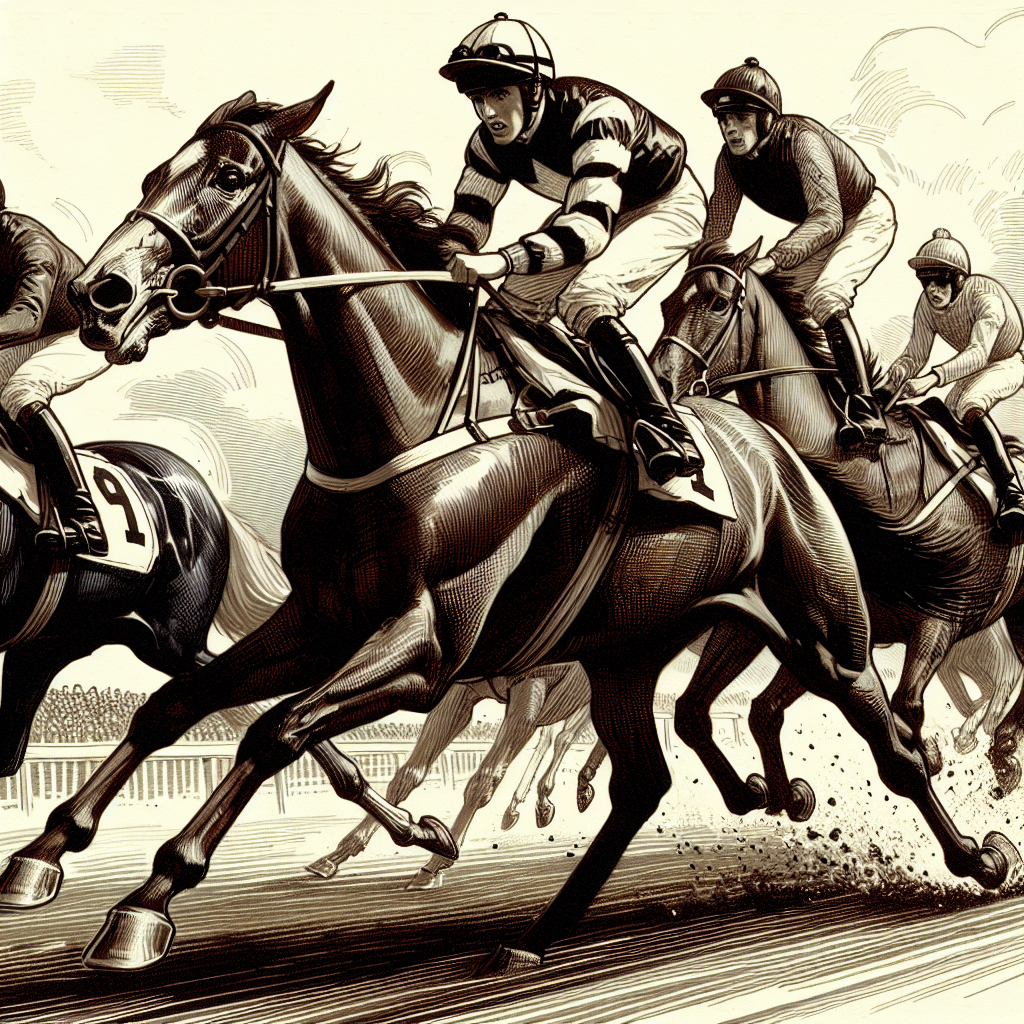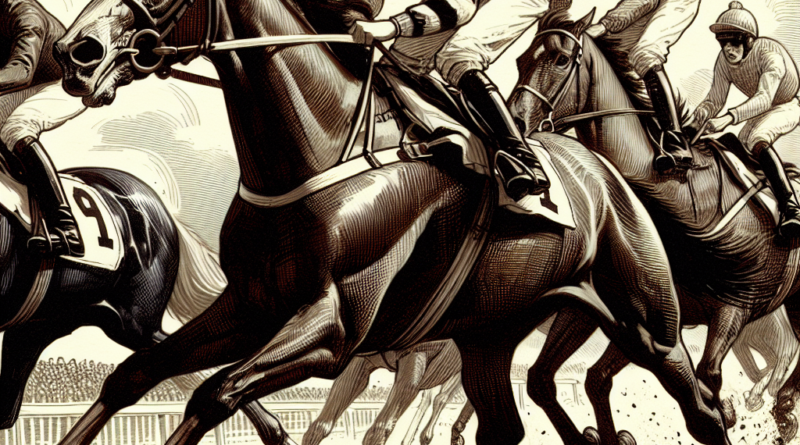How Is A “handicap” Race Different From Other Types Of Horse Races?
In the thrilling world of horse racing, the intricacies are endless. The subtle distinction between each type of horse race can flip the result from expected to downright surprising. Among these numerous racing formats, handicapping stands unique. In this article, “How Is A “handicap” Race Different From Other Types Of Horse Races?”, you’ll gain insight into what differentiates a handicap race from other popular racing formats, equipping you with knowledge that might just give you the edge at your next race day outing.

Understanding Handicap Horse Racing
In the world of horse racing, the concept of ‘handicap’ racing plays a vital role and holds great interest for both participants and observers. Understanding this can enrich your experience and increase your appreciation of the sport.
Definition of Handicap Horse Racing
Handicap horse racing is a type of race in which the weight a horse carries is adjusted in an effort to equalize the competition. The better a horse’s past performance, the more weight it will carry, challenging it to achieve the same success against lesser-performing horses carrying lighter weights.
Purpose of Handicap Races
The purpose of a handicap race is to level the playing field and ensure fair competition among horses with different levels of ability. This system tries to give every horse, irrespective of its performance history, an equal chance to win the race.
History of Handicap Races
The history of handicap races dates back to the mid-18th century in England when an equivalent system started being used to balance differences in horse abilities. The system was subsequently adopted globally and is now a standard feature in many horse racing events.
Differences in Race Structure
The structure of a race can greatly impact its course and outcome, requiring varying strategies from both jockeys and trainers.
Standard Race Structure
In a standard race, all horses carry the same weight, with potential minor allowances made for factors such as the horse’s age or sex, or the jockey’s experience. The winner of a standard race is generally the fastest horse.
Handicap Race Structure
In a handicap race, each horse is allocated a different weight based on its form. This is designed to provide all horses with an equal chance of winning, and ensures the race’s outcome is not solely determined by speed.
Purpose of Different Race Structures
Different race structures serve different purposes. Standard races are usually for establishing which horses are fastest, while handicap races aim to level the performance playing field and make the race more competitive and unpredictable.
Assigning Weights in Handicap Races
Assigning weights in handicap races is a critical and complex process, done by a handicapper.
Methodology of Assigning Weights
Weights are assigned based on the horse’s past performances, with better-performing horses receiving more weight. The handicapper takes into account a variety of factors, including the quality of the horses beaten, distances won by, and the weight carried in previous races.
Role of the Handicapper
The handicapper’s role is to analyze past performance data and assign weight to each horse, aiming to provide each horse with an equal chance of winning the race. This involves a constant re-evaluation of a horse’s form, to keep up with changes in ability.
Impact of Weights on Race Outcomes
The weight a horse carries can significantly affect the race outcome. Well-handicapped horses may outperform their ratings, while those overburdened may falter, making races more unpredictable and exciting.

Significance of the Handicapping System
The handicapping system is crucial in ensuring fair and exciting races, though it has its pros and cons.
Equality and Competition in Handicap Races
Handicapping promotes equality, as it levels the playing field. Every horse, regardless of its potential or previous successes, has a fair chance to win. It also heightens competition, making races more unpredictable.
Understanding the Handicapping System
Understanding the handicapping system turns horse racing from a simple bet on the fastest horse into a game of skill and judgement, where one must appraise horses’ relative abilities and how they might be affected by the weight they carry.
Pros and Cons of the Handicapping System
The handicapping system adds a layer of strategy and intrigue to horse racing, making it more attractive to bettors and spectators. However, critics suggest it can over-penalize successful horses and discourage connections from running their horses on a regular basis.
Participant Eligibility in Handicap Races
Participant eligibility in handicap races is determined by various factors.
Age and Sex Criteria
Some races are restricted to certain age or sex classes, while others are open to all. For example, there are races specifically for two-year-old horses or fillies and mares only.
Performance History Criteria
A horse’s performance history also determines its eligibility. In some jurisdictions, horses must have run a certain number of times or achieved a certain level of performance to qualify for handicap races.
Impact of Criteria on the Race
Eligibility criteria ensure that the horses competing against each other in a handicap race are of similar caliber, thereby enhancing the chances of an exciting, closely-contested event.
Variations of Handicap Races
There are various types of handicap races, each with unique impacts on the race and set of famous races.
Different Types of Handicap Races
These include, but are not limited to, progressive handicaps, where the weight a horse carries increases with each win, and rating handicaps, where a horse’s rating dictates the weight carried.
How Variations Impact the Race
These variations create a range of race dynamics and strategies. For instance, in progressive handicaps, trainers may reserve their horses’ best efforts for bigger races, while rating handicaps can incentivize trainers to hide their horses’ true abilities.
Most Famous Handicap Races
There are many prestigious handicap races worldwide, including the Grand National in the UK and the Melbourne Cup in Australia. These races attract global attention and have an illustrious history.
Comparison with Other Types of Races
Comparing handicap races with other types of horse races helps understand the unique intricacies of each.
Difference between Handicap and Stakes Races
In handicap races, weight carried is adjusted according to each horse’s ability, while in stakes races, horses carry the same base weight, with allowances for age and sex.
Contrast between Handicap and Claiming Races
Unlike handicap races, in claiming races, all horses are for sale for a specified price. While the weight carried in handicap races is adjusted, in claiming races, it relates to the claiming price.
Other Types of Races Explained
Other race types include maiden races for horses that haven’t won yet, and allowance races, where specific allowances are given to horses based on conditions met.
Impact of Handicap Races on Horse Racing Betting
Handicap races have a significant impact on horse racing betting, particularly in terms of odds and strategy.
Handicap Races and Odds
Handicap races offer more competitive odds as every horse theoretically has an equal chance of winning. Therefore, it’s not uncommon to see higher odds offered on the outright favorite in a handicap race.
Betting Strategy for Handicap Races
Handicap races require a more thoughtful betting strategy. Rather than simply backing the fastest horse, bettors must consider the impact of the assigned weights and whether a horse can overcome its handicap to win the race.
Impact of Weights on Betting Odds
The weights assigned to horses in a handicap race directly affect the betting odds. Horses carrying lighter weights may have shorter odds than those carrying heavier weights, despite potentially having inferior form or ability.
Effects of Handicap Races on the Horses and Jockeys
Handicap races have distinct effects on the participants, including physical stress on horses and the need for specific jockey skills.
Physical Impact on Horses
The weights that horses carry in handicap races can have a physical impact on them. Carrying more weight can tax a horse’s stamina, potentially affecting its performance and long-term wellbeing.
Skills Needed by Jockeys in Handicap Races
Jockeys’ skills are put to the test in handicap races. Besides the physical strength required to control a horse carrying heavy weight, jockeys need tactical acumen to compete effectively when all horses are theoretically evenly matched.
Career Impact on Horses and Jockeys
Handicap races can significantly impact the careers of horses and jockeys. Winning prestigious handicap races, often rich in prize money, can help jockeys gain recognition and horses improve their stud value.
Critiques and Controversies of Handicap Racing
Despite its popularity and significance, handicap racing faces its share of critiques and controversies.
Debates around the Handicapping System
There are ongoing debates about the fairness of the handicapping system. While it seeks to level the playing field, some argue it can penalize successful horses and discourage their participation in races.
Critiques of Weight Assigning Process
The process of weight assignment is also often scrutinized. Critics argue that it can be subjective, and a slight misjudgement can lead to an unfair advantage or disadvantage for certain horses.
Reforms Proposed in Handicap Racing
To address these issues, various reforms have been proposed in handicap racing. These include changes in weight assignment methods to make them more objective and equitable. Regardless of any future reforms, handicap races will undoubtedly continue to be a central part of horse racing sport.

